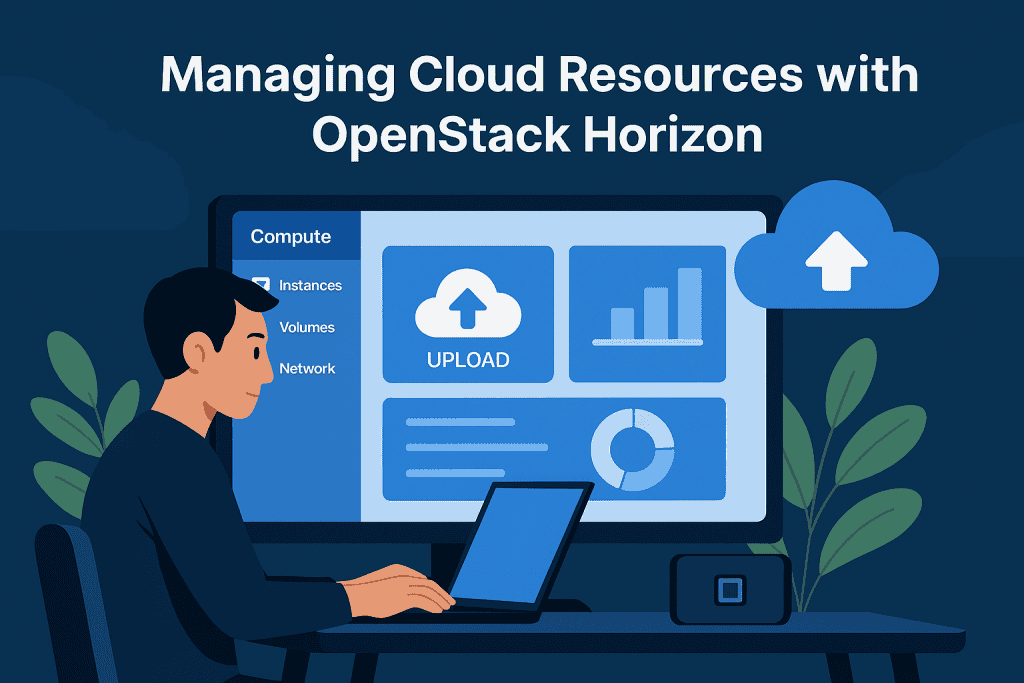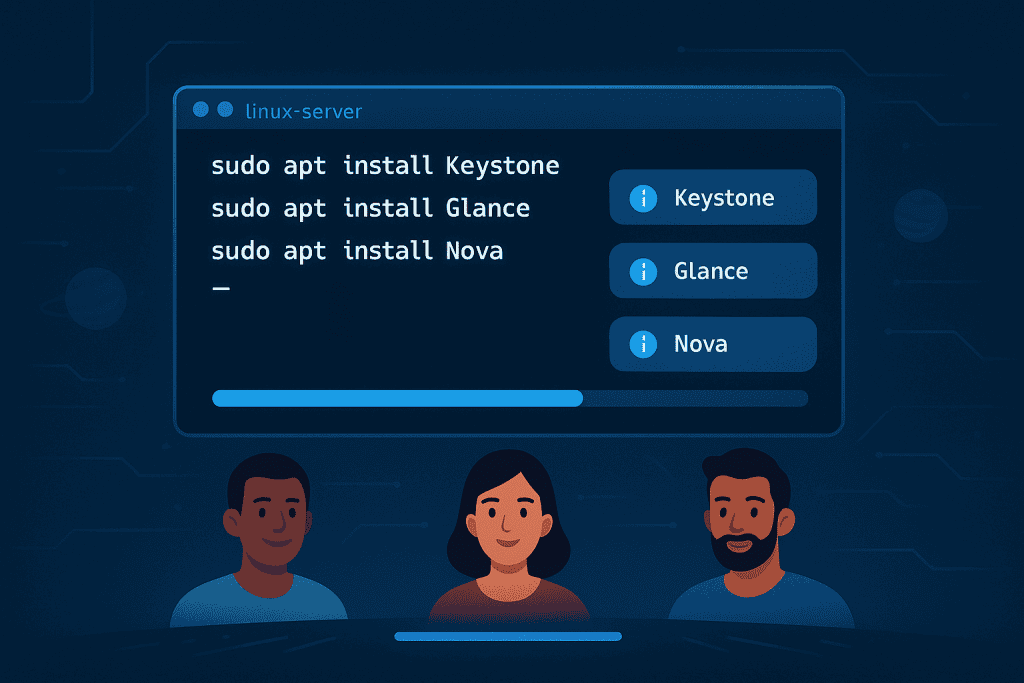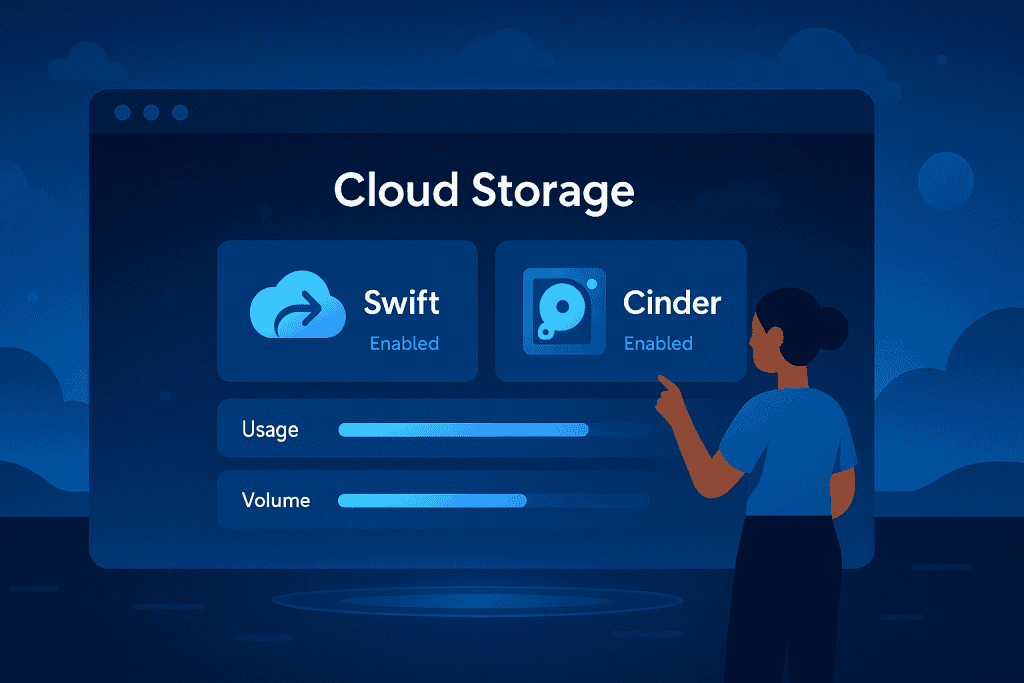
Cloud computing has completely transformed the way businesses and developers handle data, applications, and services. It has revolutionized industries by offering scalable, flexible, and cost-efficient solutions for managing digital resources. Whether it’s hosting applications, storing vast amounts of data, or processing workloads remotely, cloud computing has become an essential part of modern technology infrastructure. If you’ve ever dreamed of having your own private cloud storage, it is your go-to solution. Unlike traditional storage solutions, which often require significant hardware investments and maintenance, this cloud computing platform offers a more efficient and streamlined approach. It’s an open-source cloud computing platform that enables organizations to build, manage, and scale cloud environments effortlessly, giving them full control over their data and infrastructure.
But here’s the exciting part—this isn’t just about storage. It’s about innovation. As an open-source project, it has fostered a community-driven approach to cloud computing, continuously evolving to meet the needs of businesses and developers worldwide. Companies of all sizes, from startups to tech giants, are leveraging OpenStack to push the boundaries of cloud computing, making it more accessible, cost-effective, and scalable than ever before. Its modular architecture allows users to customize and optimize their cloud environments, ensuring maximum efficiency and flexibility. Whether you’re an IT professional, a developer, or a tech enthusiast, this guide will walk you through setting up private cloud storage using it, providing step-by-step instructions to help you fully harness the power of innovation in OpenStack.
Let’s dive in and get you started!
Materials or Tools Needed
Before we get started, here’s what you’ll need:
| Tool/Requirement | Description |
|---|---|
| OpenStack Software | The core software package (download from OpenStack’s official site) |
| Linux Server | Ubuntu 20.04 LTS or CentOS 8 recommended |
| Minimum Hardware | 8GB RAM, 4 CPU cores, 100GB storage |
| Internet Connection | Required for downloading dependencies |
| Python & Pip | OpenStack relies on Python-based services |
| Virtual Machine or Physical Server | A dedicated environment to install OpenStack |
Make sure your system meets these prerequisites before proceeding.
Step-by-Step Instructions

Step 1: Install OpenStack Prerequisites
First, you need to prepare your system by updating the packages and installing essential tools:
- Open a terminal and run:bashCopyEdit
sudo apt update && sudo apt upgrade -y - Install necessary dependencies:bashCopyEdit
sudo apt install python3 python3-pip git -y - Ensure your server has a static IP address (important for OpenStack networking).
By setting up these prerequisites, you’re laying the foundation for smooth deployment.
Step 2: Install OpenStack Using DevStack
One of the easiest ways to install it is by using DevStack, a script-based tool designed for testing and development.
- Clone the DevStack repository:bashCopyEdit
git clone https://opendev.org/openstack/devstack.git cd devstack - Create a configuration file:bashCopyEdit
nano local.confAdd the following lines to the file:iniCopyEdit[[local|localrc]] ADMIN_PASSWORD=yourpassword DATABASE_PASSWORD=yourpassword RABBIT_PASSWORD=yourpassword SERVICE_PASSWORD=yourpasswordSave and exit. - Start the installation process:bashCopyEdit
./stack.sh
This step takes 15-30 minutes. Once completed, you’ll see the OpenStack Dashboard URL.
Step 3: Access Dashboard
After a successful installation, it provides a web-based interface called Horizon.
- Open your browser and enter:arduinoCopyEdit
http://your-server-ip/dashboard - Log in with:
- Username: admin
- Password: (the one you set in local.conf)
Once inside, you can start configuring your private cloud storage.
Step 4: Configure Storage (Swift or Cinder)
It offers two primary storage solutions:
- Swift (Object Storage): Best for scalable storage, similar to AWS S3.
- Cinder (Block Storage): Ideal for persistent storage, similar to AWS EBS.
Set Up Swift (Object Storage):
- Enable the Swift service:bashCopyEdit
openstack service create --name swift --type object-store - Create a storage container:bashCopyEdit
openstack container create my-private-cloud
Set Up Cinder (Block Storage):
- Enable Cinder:bashCopyEdit
openstack service create --name cinder --type volume - Create a storage volume:bashCopyEdit
openstack volume create --size 10 my-volume
Now, your private cloud storage is fully configured!
Tips and Warnings
| Tips | Warnings |
|---|---|
| Use a dedicated server for OpenStack to avoid performance issues. | It requires a lot of resources. Ensure your server meets hardware requirements. |
| Regularly update its components to avoid security vulnerabilities. | Misconfiguration can lead to data loss. Double-check your settings before deployment. |
| Utilize OpenStack CLI for advanced control and automation. | Ensure strong passwords to protect your cloud environment. |
By following these best practices, you ensure smooth performance and security for your private cloud.
Conclusion

Setting up private cloud storage using it may seem daunting at first, especially for those new to cloud computing, but with the right tools and a step-by-step approach, it becomes a rewarding and educational experience. By breaking down the process into manageable steps, even beginners can successfully deploy and manage their own cloud infrastructure. As you gain familiarity with its components and capabilities, you’ll discover just how powerful and efficient this platform can be. It is a symbol of innovation in cloud computing, offering unparalleled flexibility and control over your data, allowing businesses and individuals to tailor their cloud environments to meet their specific needs. Unlike traditional storage solutions, which often come with limitations and high costs, it provides an open, scalable, and customizable alternative, ensuring that you maintain complete autonomy over your infrastructure.
Now that you have your own cloud storage, experiment with its features, scale your infrastructure, and explore endless possibilities.
Happy cloud computing!
FAQ
How does OpenStack drive innovation in cloud storage?
It fosters innovation by offering a scalable, flexible, and cost-effective alternative to proprietary cloud solutions. Organizations can customize their cloud environments, ensuring maximum efficiency.
Can I use OpenStack for personal cloud storage?
Yes! It is open-source and free, making it ideal for small-scale private cloud setups at home or in small businesses.
What are the key benefits of OpenStack for enterprises?
Enterprises use it for cost savings, vendor independence, and scalability. It supports hybrid cloud architectures, ensuring businesses innovate without being locked into a single provider.
Resources
- Rackspace Technology: Learn About OpenStack Private Cloud
- Open Source For You: Building a Private Cloud Using OpenStack
- IEEE Xplore: Discover Providing storage as a service on cloud using OpenStack
- Red Hat: Understanding OpenStack
- Medium: A Beginner’s Guide to OpenStack – Adriana Villela – Medium
